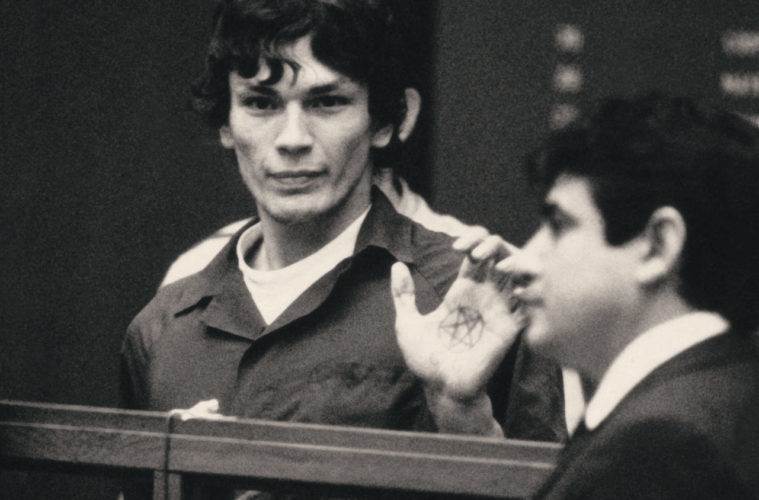When it comes to serial killers and public fascination with them, it’s hard not to question the sordid allure, even if that means asking why we might be interested ourselves. True crime chronicles that explore the psychology behind the hows and whys of a warped and menacing mind are one thing, but glorification and murder porn is quite another. When it comes to documentaries, this line can sometimes get blurred and then we have to ask ourselves the tough question: how is this entertainment?
Thankfully, the new Netflix docu-series Night Stalker: The Hunt For A Serial Killer only has a few moments like that. There are crime scene photos that some have taken issue with, but this is not a glorification. It is a story about humanity, fortitude and resilience in the face of relentless evil. Directed by Tiller Russell (Silk Road, The Last Narc), the four-part doc tells the true tale of how Richard Ramirez terrorized Los Angeles in the Summer of 1985 before he was ultimately caught, charged and tried in court.
In age of #TWs (trigger warnings), media that deals with real life murder, maiming and molestation feels all the more disturbing, and it probably goes without saying that victims of, or those close to, similar crimes should not watch Night Stalker. Still, the show will probably stir up creeped-out feelings for any Angeleno who was alive and aware during Ramirez’s reign of terror. It was a sweltering Summer, and those of us who didn’t have air conditioning couldn’t even leave the windows open for fear of the killer breaking in. The city was on edge just as it was during the Hillside Strangler’s slaughters and the Manson family murders before that.
As the doc illustrates, Ramirez’s crimes were more extensive than the public knew at the time. He did not discriminate when he raped and bludgeoned, and his victims ran the gamut age, race and gender-wise. But his sexual assaults of children were far more excessive than most of us knew; it was decided his wrap sheet was long enough to get locked up for life without putting his young victims through the trauma of courtroom testimony. Even now, seeing Anastasia Hronas, one of his victims -whom he abducted at 6 years old- recount her experience as a grown woman, is pretty hard to watch, though learning that it was her identification that put him away does make it a little easier. Also, her strength is inspiring.
So too, is the resolve of the police and detective team profiled here. In fact, this is their story, not the killer’s, and we learn how the investigation affected their work and their personal lives as well. Unraveled by Gil Carrillo (looking back when he was a young detective on the case) from the Los Angeles County Sheriff’s Department and the well-known homicide investigator Frank Salerno, we see how they approached the case as the media and a panicky public followed in fear. At a time when trust in police is shaky to say the least, it is nice to see real cops on screen who care, doing everything they can to get the bad guy.
The cultural obsession with serial killers like Ramirez isn’t really explored, but his host of young, mostly female fans -many of whom attended his court hearings- are rightly called out here. In recorded interview snippets Ramirez comes off neither charismatic nor very bright, so one imagines fandom for the pentagram-sporting monster was simply about subversive rebellion. He claimed to be a satanist and was a known fan of metal music so his hardcore admirers tended to rep a dark aesthetic. The music connection and questionable cultural obsession with vile slaughterers (i.e. Manson t-shirts and John Wayne Gacy art collectors) is perhaps a topic for another doc, but by the fourth and final episode of Night Stalker, it’s hard to imagine anyone viewing Ramirez as a rockstar.
Advertising disclosure: We may receive compensation for some of the links in our stories. Thank you for supporting LA Weekly and our advertisers.

